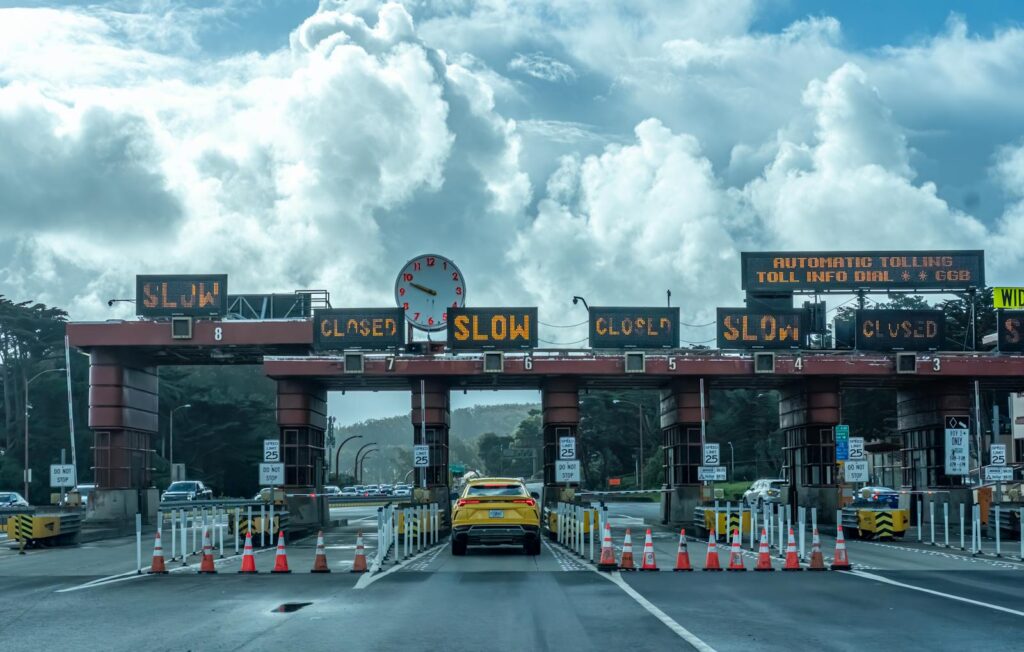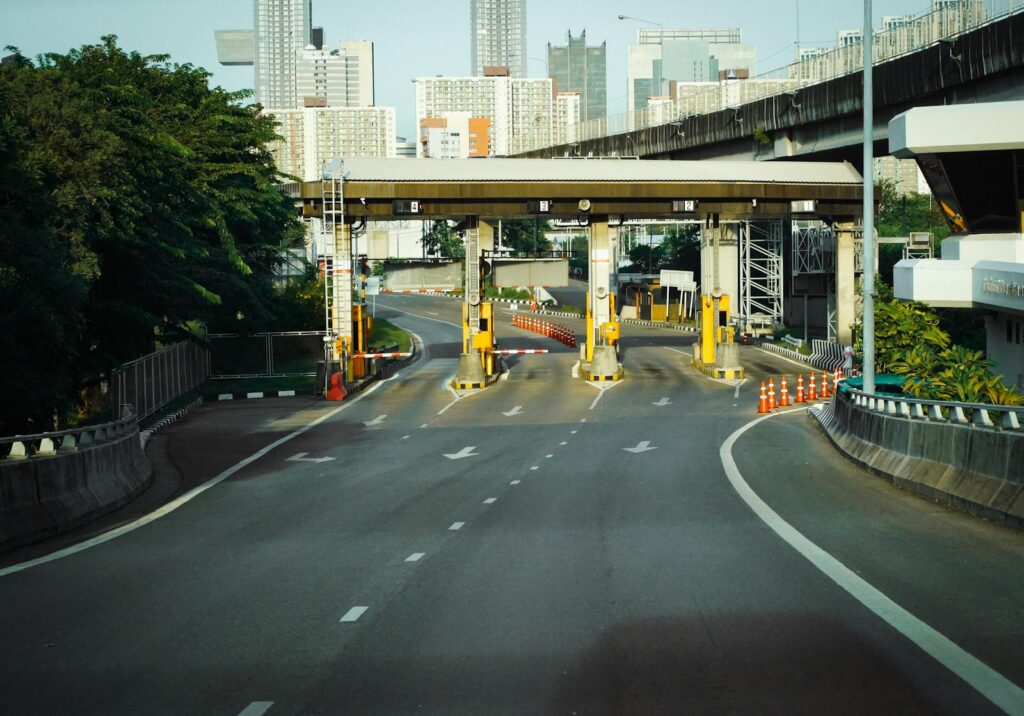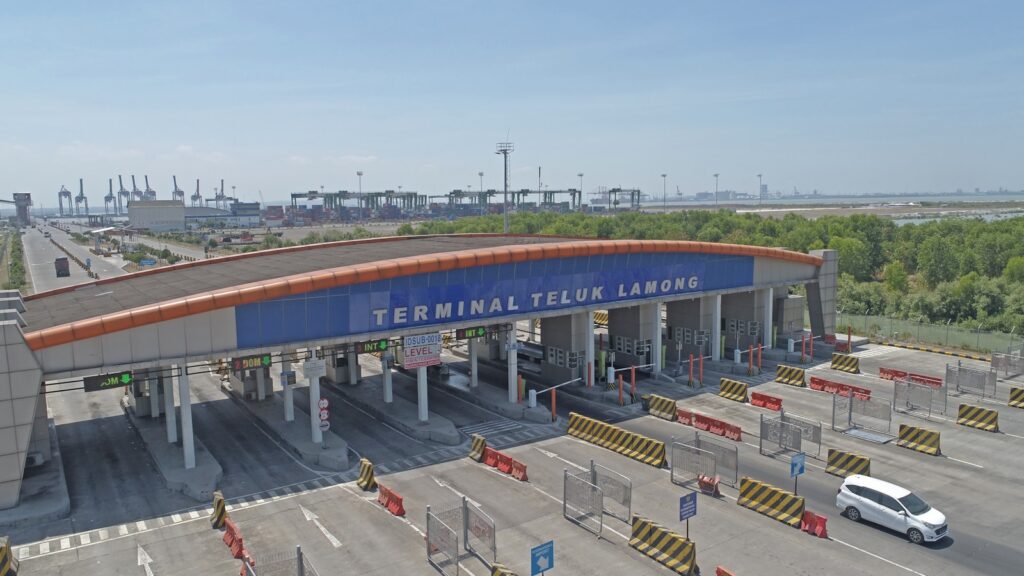
Ah, the open road! The wind in your hair, the endless horizon, the joy of discovering charming towns and breathtaking landscapes—that’s the pure essence of a road trip. It’s about freedom, exploration, and creating unforgettable memories. But let’s be real, there’s often a hidden villain lurking in the shadows of that perfect journey: the dreaded toll road. These sneaky fees can chip away at your carefully planned budget faster than you can say “cashless booth.”
It’s a frustrating scenario many road trippers have faced: cruising along, enjoying the scenery, only to suddenly find yourself confronted with a cashless toll. This can lead to the anxiety of a bill arriving in the mail later, often at significantly higher rates—sometimes 100% more than the transponder rate! To preempt some of these headaches, it’s savvy to ensure you have the right toll pass or even buy toll coverage if you’re rolling in a rental car. For instance, E-ZPass is a fantastic option for those traversing the United States’ Northeast and parts of the Midwest, including a whopping 15 states like Pennsylvania, Ohio, West Virginia, Indiana, Illinois, Kentucky, Virginia, North Carolina, Maryland, New Jersey, Delaware, New York, Massachusetts, New Hampshire, Rhode Island, and Maine. And if you’re renting from Hertz, Dollar Car Rental, or Thrifty Car Rental in states like California, Colorado, Florida, Georgia, North Carolina, Texas, Washington, and the Northeast U.S., PlatePass can be your electronic toll payment hero, covering those sneaky cashless tolls.
But even with the right passes, some toll roads are just plain expensive, demanding a hefty chunk of your travel fund for a bit of convenience. We’ve scoured the maps to bring you a curated list of the twelve most notorious and costly toll roads across the U.S. – the ones that demand a hefty chunk of your travel fund – and we’re definitely recommending you take the scenic route around them. Get ready to save some serious cash and discover some hidden gems along the way, turning your next road trip into an economical, efficient, and thoroughly enjoyable adventure.

1. **Delaware Turnpike (I-95 Toll Plaza)**When you’re cruising through Delaware, a small state with a surprisingly big impact on your wallet when it comes to tolls, the Delaware Turnpike, specifically the I-95 Toll Plaza, is one you’ll want to watch out for. This isn’t just any old toll; it’s a critical artery connecting Baltimore and Philadelphia, meaning it’s perpetually busy with high traffic volumes. It’s a prime example of where the convenience of a direct route comes with a significant price tag attached.
For passenger vehicles, you’re looking at up to $4 just to pass through this bustling corridor. While $4 might not sound like a fortune on its own, imagine navigating this route multiple times, or consider how quickly these small fees accumulate over a longer journey. This particular toll is almost always in effect, turning it into a consistent drain on your travel budget if you’re not careful.
The constant flow of traffic guarantees that these tolls are always collecting, funding highway maintenance and new road creation, as the context points out. However, for the budget-conscious traveler, it represents an immediate and repeatable expense that adds up. It’s an unavoidable payment if you stick to the I-95 here, making it a top contender for our “back way around” list.
Instead of succumbing to this toll, smart travelers should be actively seeking alternatives. The context highlights that US Route 13 runs parallel to I-95 and offers a toll-free option through most of Delaware. Opting for this can provide a much-needed financial reprieve without adding an exorbitant amount of time to your overall travel, making it a worthwhile detour for your journey.

2. **State Route 1 (Delaware)**Another significant toll road demanding your attention in the First State is State Route 1. This isn’t a mere connector; it’s identified as Delaware’s main toll road, and it certainly lives up to its reputation for cost, especially at specific times of the year. For passenger vehicles, you’re looking at up to $3 for a one-way trip, which might seem modest until you factor in peak travel seasons.
What makes State Route 1 particularly costly is its popularity during prime travel windows, such as the bustling summer weekends. If your road trip involves hitting the beaches or popular vacation spots during these periods, you can bet that this $3 toll will be a frequent occurrence. These repeated charges can transform a seemingly minor fee into a substantial expense by the end of your trip.
It’s not just the monetary cost; it’s the principle of constantly paying for what could be a free alternative. This road, like many tollways, offers a faster, more direct route. But that speed comes at a premium, and for travelers who prioritize savings, that premium can feel excessive. It’s about making a conscious choice: shave off a few minutes or save a few dollars.
For those determined to keep their cash firmly in their pockets, the context offers a fantastic solution: State Route 9. This route provides a scenic, toll-free alternative along the Delaware River. Not only do you avoid the toll, but you also get to enjoy a potentially more picturesque journey, turning what could have been a financial burden into a delightful scenic detour.

3. **SH 130 (Segments 5 & 6) (Texas)**Welcome to Texas, where everything is bigger, including, unfortunately, some of the toll road prices. SH 130, specifically segments 5 & 6, stands out as one of the state’s pricier options. This particular stretch is often touted as a popular relief route for avoiding the notorious Austin traffic, a convenience that many drivers might consider invaluable during rush hour. However, that convenience comes at a truly high cost, making it a prime candidate for our “back way around” strategy.
To be precise, taking the full route of SH 130 can set passenger vehicles back up to $12.88. That’s a significant chunk of change for a single stretch of road, especially when you think about how quickly that can add up if you’re frequently passing through or on a multi-state adventure. It’s the kind of fee that makes you pause and seriously question whether shaving off a few minutes is truly worth the financial outlay.
This toll road embodies the dilemma of modern travel: speed and efficiency versus cost. While it undeniably offers a faster way to bypass congested city streets, the price point of nearly $13 makes it one of the most expensive tolls you might encounter. For many road trippers, especially those on a budget, this cost is simply too steep to justify, pushing them to seek alternative, albeit potentially longer, routes.
The context doesn’t leave us without hope! It explicitly recommends US Highway 183 as an alternative to SH 130, offering a toll-free option from Austin to Seguin. This means you can still navigate around the Austin traffic without draining your wallet. It’s a perfect example of how a little planning can lead to substantial savings, keeping your road trip funds available for more enjoyable expenditures.

4. **North Texas Tollway Authority (Sam Rayburn Tollway) (Texas)**Continuing our journey through the Lone Star State’s toll landscape, we encounter another wallet-wrecker: the North Texas Tollway Authority’s Sam Rayburn Tollway. This isn’t just a leisure road; it’s an essential thoroughfare for Dallas commuters, weaving through crucial parts of the metropolitan area. Its importance makes it a frequent fixture in many drivers’ daily routines, which, unfortunately, also means its costs can add up with alarming speed.
For passenger vehicles traversing the full route, the Sam Rayburn Tollway demands $8.61. When you consider that many commuters use this road daily, perhaps even multiple times a day, those dollars quickly morph into hundreds, if not thousands, of dollars annually. For a road tripper merely passing through, this is an unexpected expense that can significantly inflate their travel budget.
This tollway highlights how embedded these fees have become in modern infrastructure, offering what seems like an indispensable route. However, for those keen on maximizing their travel budget, accepting such a high, recurring charge simply isn’t an option. It forces a decision: pay for the convenience or explore alternative paths that keep your money where it belongs – in your pocket for gas and experiences.
The context doesn’t offer a direct “Sam Rayburn Tollway” alternative, but it does mention I-35. While congested, I-35 is highlighted as a toll-free route parallel to SH 130 and the Dallas North Tollway. By extension, exploring I-35 or other local, non-tolled roads can often provide a viable workaround for parts of the North Texas Tollway Authority’s network, ensuring you’re not constantly hitting these costly expressways.

5. **Florida’s Turnpike**Ah, Florida, the Sunshine State! Known for its pristine beaches, theme parks, and… some of the most expensive toll roads in the country. Florida’s Turnpike is an absolute beast, stretching all the way from Miami to Central Florida. It’s designed for speed, efficiency, and direct travel across a vast expanse, but it delivers on those promises at a premium price that can leave your wallet feeling significantly lighter.
Prepare for sticker shock: taking the full route of Florida’s Turnpike can cost passenger vehicles up to a staggering $22.59. Let that sink in. Nearly twenty-three dollars for a single stretch of road! This makes it one of the priciest single toll road experiences you can have in the U.S. It’s the kind of toll that makes you seriously consider whether a few hours saved is worth nearly a day’s budget for food or attractions.
This road is a quintessential example of speed offered at a premium. For those with no budget constraints, it’s a quick shot across the state. But for the average road tripper, it’s a major financial hurdle. This toll alone could blow a significant portion of your daily travel allowance, turning a sunny Florida cruise into a budget-conscious scramble.
Thankfully, the context provides a clear escape route. US Highway 1 is offered as a slower but decidedly toll-free alternative to Florida’s Turnpike. While it might add some time to your journey, the savings are substantial, making it an excellent choice for budget-minded travelers. Embracing the slower pace often leads to discovering hidden coastal gems and charming roadside stops that you would have missed on the faster, pricier turnpike.
Read more about: Buckle Up! The Ultimate Road Trip Playlist: 14 Classic Rock Albums You Can Listen to for 5 Hours Straight (and Beyond!)

6. **Alligator Alley (I-75) (Florida)**Keeping with our theme of Florida’s pricey passages, let’s talk about Alligator Alley, a section of I-75 that connects Naples and Fort Lauderdale. This isn’t just any road; it’s a direct route across the wild and beautiful Everglades, offering a unique driving experience through one of Florida’s most iconic natural landscapes. However, this convenient passage through the wilderness also comes with a toll that, while not as astronomical as Florida’s Turnpike, is still worth noting.
For passenger vehicles, a one-way trip across Alligator Alley will cost you $3.25. Like many tolls, it’s designed to provide a quicker, more direct link between two significant points, allowing you to bypass more circuitous or time-consuming alternatives. The price point is moderate, but it’s another one of those fees that, if not accounted for, can add up, especially if your trip involves multiple crossings or you’re already trying to stretch your budget.
The convenience factor here is huge; traversing the Everglades directly is a time-saver. Yet, the question remains whether that convenience is always worth the cost for every traveler. For some, the $3.25 is a small price to pay for the direct route and the unique experience of driving through the Everglades. For others, every dollar saved is a victory, and they’ll happily seek alternatives.
While the context doesn’t specifically list a toll-free alternative for Alligator Alley, the overarching theme is that there are *always* alternatives, even if they add time or distance. For instance, exploring state roads that run north or south of the I-75 stretch, or even incorporating a scenic drive through smaller towns, can often bypass such direct, tolled routes. It’s all about deciding what’s more valuable: your time or your cash, and for many road warriors, the latter often wins out.
Alright, fellow road warriors, we’ve already unmasked a few of the sneaky toll traps lying in wait across the U.S. But our journey to ultimate toll-free freedom is far from over! Get ready to dive into six more pricey passages that can seriously dent your travel budget, from the historic highways of Virginia to the bustling byways of Texas. We’ll show you exactly why you should sidestep them, and more importantly, how.
After we conquer these final toll titans, we’re shifting gears to equip you with the ultimate toolkit for navigating smarter. We’re talking expert advice on leveraging mapping apps like Google Maps, Waze, and Apple Maps to become a master of toll avoidance. So, buckle up, because your pockets are about to get a whole lot happier, and your next road trip? It’s going to be legendary, not financially draining.

7. **Delaware Memorial Bridge (Delaware)**Connecting Delaware and New Jersey, the Delaware Memorial Bridge is more than just a crossing; it’s a critical link that funnels a constant stream of traffic. And, like many vital conduits, it comes with a toll. While the fee itself might not be the highest on our list, its strategic importance means it’s a charge you’ll encounter frequently if your travels take you between these two states.
For passenger vehicles, you’re looking at a $5 toll, but here’s the catch: only northbound drivers pay it. This might seem like a small relief, but if you’re making multiple trips or heading in that specific direction, that $5 can add up. It’s a classic example of a necessary infrastructure piece that extracts a premium for convenience and directness, allowing you to bypass more convoluted routes.
Bridges, in general, are notorious for their tolls, and the Delaware Memorial Bridge is no exception. They’re often the most challenging fees to circumvent because, well, you can’t exactly drive around a massive body of water or through it. This makes planning crucial. For this one, the context doesn’t offer a direct parallel bypass for the bridge itself, reinforcing the challenge.
However, the overarching strategy remains: if avoiding this toll is a priority, you’ll need to think bigger. This might mean adjusting your overall route to bypass the crossing entirely, perhaps by using other bridges further north or south that might be toll-free or less expensive, or even re-evaluating if crossing into New Jersey at that specific point is essential for your itinerary. It’s about being flexible and creative with your journey.

8. **Dallas North Tollway (Texas)**Back to Texas, where the tollways are plentiful and, as we’ve seen, often pricey. The Dallas North Tollway is another significant entry on our list, particularly if your journey takes you north of Dallas. This isn’t just a random stretch of road; it’s a vital artery for daily commuters, meaning it sees heavy usage and, consequently, collects a hefty sum in tolls.
If you traverse the full length of the Dallas North Tollway, passenger vehicles can expect to pay $7.36. For commuters, this is a recurring cost that can quickly snowball into a substantial annual expense. For the transient road tripper, it’s yet another example of how taking the seemingly quickest path can drain your budget without much warning if you’re not prepared.
This tollway really underscores the trade-off between speed and cost in urban environments. While it undoubtedly offers a more direct and often faster route through the busy Dallas area, its cost makes it a prime candidate for seeking alternatives. Every dollar saved on a toll is a dollar that can be spent on a delicious BBQ joint or a unique roadside attraction.
For those committed to a toll-free adventure, our context offers a solid piece of advice: I-35. While it might be notorious for congestion, I-35 runs parallel to routes like the Dallas North Tollway and is famously toll-free. It might add some time and patience to your journey, but the savings are real, making it a viable workaround for keeping your cash where it belongs.

9. **Beachline Expressway (SR 528) (Florida)**We’re heading back to the Sunshine State, but this time, our focus is on the Beachline Expressway, also known as SR 528. This isn’t just any road; it’s a popular route for tourists, connecting the magic of Orlando’s theme parks to the sun-drenched shores and awe-inspiring Space Coast of Cocoa Beach. Its popularity means it’s a frequent encounter for many vacationers.
Taking the full route on the Beachline Expressway can cost passenger vehicles up to $6. This might not be the highest toll on our list, but when you consider that many tourists are likely to use this route multiple times during their stay—perhaps heading to the beach one day, then returning to Orlando—those $6 fees can add up swiftly.
This tollway capitalizes on convenience, offering a direct shot from the inland attractions to the coastal beauty. For families on vacation, the temptation to take the quickest route is strong. But for those of us who prefer to save our pennies for souvenirs and delicious seafood, that convenience comes at a price that we’re eager to avoid.
Thankfully, the context provides a clear escape hatch: State Road 520. This route offers a toll-free alternative that runs between Orlando and Cocoa Beach, allowing you to bypass the Beachline Expressway entirely. It might take a little longer, but you’ll be cruising with a lighter wallet and potentially discovering some unexpected Florida charm along the way.

10. **Dulles Greenway (Virginia)**Welcome to Virginia, a state rich in history but also featuring some notably modern—and expensive—toll roads. The Dulles Greenway is one such example, a crucial link connecting Leesburg to the bustling Dulles Airport. For many travelers, especially those rushing to catch a flight, this route offers unparalleled speed and direct access.
However, that speed comes at a significant cost. For passenger vehicles, a one-way trip on the Dulles Greenway can set you back up to $6.05. And beware, prices can get even higher during peak hours, when demand is at its highest. This dynamic pricing means that if you’re caught in the airport rush, you could be paying a premium for those precious minutes saved.
The Dulles Greenway is a perfect illustration of how time-sensitive travel often gets penalized with higher tolls. It’s a calculated decision for many: pay the toll for a less stressful commute, or take a longer, potentially more congested, but toll-free route. For the budget-conscious road tripper, the answer is clear.
The good news is that avoiding this one is straightforward! The context explicitly points to US Highway 50 as a toll-free alternative to the Dulles Greenway. Opting for this route means you can still navigate to and from the Leesburg/Dulles area without contributing to the toll coffers, keeping your travel funds intact for more enjoyable expenditures.

11. **I-66 Express Lanes (Virginia)**Now, let’s talk about a toll road that takes unpredictability to a whole new level: the I-66 Express Lanes in Virginia. This isn’t just a fixed fee; it operates on a dynamic pricing system, meaning the cost changes in real-time based on traffic demand. What might be a moderate toll one minute could balloon into an astronomical sum the next.
During peak congestion, the cost for passenger vehicles can soar up to a staggering $40. Yes, you read that right—forty dollars for a single stretch of road! This makes the I-66 Express Lanes one of the most expensive routes you could possibly encounter during rush hour, turning a simple commute into a potential budget disaster.
The dynamic nature of these tolls is precisely why we’re advocating for avoiding them. The uncertainty alone is enough to induce a road trip headache. Imagine planning your budget, only to find yourself unexpectedly shelling out $40 because you hit a particularly busy moment. It’s a gamble most road trippers simply can’t afford to take.
While the context doesn’t offer a direct, parallel toll-free alternative specifically for I-66, it does highlight the I-95 HOV Lanes as a potential strategy in Virginia. These lanes are free for vehicles with two or more passengers during designated times. This emphasizes the importance of understanding all available options and adjusting your travel strategy, whether it’s carpooling or simply choosing a different time or route altogether, to outsmart these dynamic tolls.

12. **Chesapeake Bay Bridge-Tunnel (Virginia)**Our final contender for the most notoriously pricey toll roads is a true marvel of engineering and, unfortunately, a significant hit to your travel budget: the Chesapeake Bay Bridge-Tunnel in Virginia. This isn’t just a bridge; it’s a 17.6-mile complex of bridges and tunnels connecting Virginia Beach to the Eastern Shore, offering a spectacular, albeit expensive, journey.
Prepare yourself for this one: a one-way trip during peak hours will cost passenger vehicles a hefty $21. This isn’t a small fee; it’s a substantial investment just to cross a body of water. For many, this unique structure is an experience in itself, but for the budget-minded traveler, that $21 could easily cover a decent meal and more.
This impressive complex represents one of those rare instances where practical, toll-free alternatives can be scarce or add an impractical amount of time and distance to your journey. It’s a direct route across a significant geographical barrier, and its uniqueness means there aren’t many “back roads” to take around it without fundamentally altering your entire itinerary.
So, what’s a savvy traveler to do? While a direct, toll-free parallel isn’t provided, the essence of toll avoidance here isn’t about finding a tiny bypass; it’s about strategic trip planning. If bypassing this $21 toll is paramount, your best bet is to consider if your itinerary truly *requires* crossing the Chesapeake Bay at this point. Perhaps an alternative route much further inland or a completely different travel plan could allow you to skip this impressive, but pricey, marvel entirely.
### Navigating the Open Road: Your Go-To Guide for Toll-Free Navigation
Phew! We’ve dodged a dozen of the most notorious toll roads out there. But merely knowing *which* tolls to avoid is only half the battle. Now, let’s talk about the real game-changer: mastering the art of toll-free navigation with the powerful tools right at your fingertips. Your smartphone, armed with the right apps, is your secret weapon to truly unlock economical, efficient, and thoroughly enjoyable road trips.
**Google Maps: Your Comprehensive Toll-Free Navigator**
Google Maps is often the first choice for trip planning, and for good reason! It offers robust toll avoidance features, complete with helpful cost displays and reliable offline capabilities. This makes it an ideal companion for ensuring cost transparency and general reliability on your journey.
To activate toll avoidance on your mobile device, simply open Google Maps, enter your destination, and tap “Directions.” Then, tap the three vertical dots (the More icon) in the top-right corner, select “Route options,” and toggle “Avoid tolls” ON before tapping “Done.” On desktop, it’s just as easy: after entering your destination and clicking “Directions,” click “Options” below the suggested routes, check the “Avoid Tolls” box, and then click “Close.”
But here’s a pro tip: you can set your preferences permanently! On mobile, tap your profile icon (top-right), select “Settings,” go to “Navigation Settings,” and toggle “Avoid tolls” ON under “Route Options.” This ensures all future trips default to toll-free routing, saving you a step every time. Google Maps also excels with its toll price display, showing estimated costs for nearly 2,000 toll roads with little price tag icons, and its dynamic rerouting continually adjusts routes based on traffic, even keeping your toll-free preference in mind. It’s truly a smart balancing act.
**Waze: Community-Powered Dynamic Avoidance**
For those who live for real-time traffic updates and a sense of community on the road, Waze is your champion. It truly excels with user-generated traffic data and dynamic rerouting, making it perfect for dodging congestion and unexpected snarls, all while trying to keep you off those pesky toll roads.
Enabling toll avoidance in Waze is flexible. You can do it before your drive by tapping “My Waze,” then the Settings cogwheel, then “Navigation,” and toggling “Avoid toll roads” ON. Alternatively, you can activate it during route planning by searching for your destination, tapping “View routes,” then “Avoid” (top-left), and toggling “Avoid toll roads” ON. You can even switch it on mid-navigation by tapping the ETA bar at the bottom, then “Routes,” then “Settings,” and toggling “Avoid toll roads” ON.
Waze’s unique strengths lie in its real-time community data, providing unparalleled live traffic updates and accident reports. While its toll price estimates are more basic than Google Maps, it applies a “significant penalty” to toll segments rather than an absolute ban. This means it won’t suggest ridiculously long detours, offering a “sanity check” to ensure your toll-free route isn’t impractical. Just remember, Waze is primarily an online app, so dynamic rerouting needs a data connection.
**Apple Maps: Seamless iOS Ecosystem Integration**
For the dedicated Apple user, Apple Maps offers a straightforward approach to toll avoidance. While it might have some limitations compared to its counterparts, its seamless integration within the iOS ecosystem makes it a convenient choice for many.
To enable toll avoidance during route planning on your iPhone or iPad, open the Maps app, enter your destination, tap “Directions,” and then tap “Avoid” below the route summary. Here, you’ll toggle “Tolls” ON and then “Apply.” On a Mac, simply open Maps, get directions, click “Options” (the gear icon), and set your preferences to avoid tolls. You can also set it as a default preference by going into your main “Settings” app, scrolling to “Maps,” and under “Directions,” tapping “Driving” and toggling “Tolls” ON.
It’s important to note Apple Maps’ limitations. It doesn’t display toll prices, only notifies you if a route contains tolls. User reports also suggest inconsistent application, meaning it might still propose toll routes where they are prevalent or during rerouting after a wrong turn. So, while integrated, it might require a bit more vigilance from your end.
**Platform Comparison: Choose Your Champion**
Still not sure which app best fits your needs? Let’s break it down. If you want detailed toll price estimates for financial planning, Google Maps is your go-to. If you prioritize robust offline navigation with toll avoidance, Google Maps again shines. For consistent toll avoidance balancing cost and travel time, Google Maps generally offers a strong preference.
However, if real-time traffic avoidance is paramount and you have a stable internet connection, Waze, with its community-powered data, is unparalleled. If you prefer deep Apple ecosystem integration and don’t need precise toll cost information, Apple Maps is a solid choice. Each app has its unique strengths, so choose the one that aligns best with your specific journey priorities—be it cost, time, scenic value, or offline reliability.
**Expert Tips: Maximize Your Toll-Free Success**
Becoming a toll-avoidance pro isn’t just about picking an app; it’s about smart habits. Always verify your settings before every trip – it’s easy to accidentally toggle off “Avoid Tolls.” Don’t blindly accept the first route an app suggests; compare all route options. Apps often show alternatives, and even with toll avoidance active, a faster tolled option might appear for comparison.
Understand the limitations of each app. Google Maps might suggest tolls in extreme traffic without a clear warning, while Waze’s “penalty” system means tolls aren’t *always* avoided if detours are excessive. Apple Maps can be inconsistent and may suggest tolls during rerouting. Always weigh the time vs. cost equation: avoiding tolls often means longer travel times and potentially higher fuel consumption. Sometimes, the extra fuel cost could cancel out the toll savings. Finally, learn local toll systems and always carry backup payment—a widely accepted transponder or some cash—just in case you unexpectedly find yourself on a toll road.
**Common User Mistakes: Avoid These Traps!**
The path to toll-free travel is strewn with common pitfalls. The primary cause of unexpected tolls is forgetting to verify settings. Users often ignore alternative routes, accepting the first suggestion without checking potentially better, toll-free options. Not understanding dynamic rerouting is another trap; apps adjust routes based on live traffic, and a chosen toll-free path can change to a tolled one if conditions make the non-toll alternative highly inefficient. Lastly, relying solely on offline maps can be risky as they lack live updates, meaning a road closure might not trigger a reroute, potentially forcing you onto a toll road.
Effectively avoiding toll roads is definitely within your reach, armed with these insights and the right digital tools. Each platform—Google Maps, Waze, and Apple Maps—offers unique strengths, along with certain limitations. By understanding these nuances and applying our expert tips, you can transform your travels into more economical, efficient, and genuinely enjoyable experiences. Start implementing these strategies today, and you could save hundreds annually while discovering new routes and hidden gems along the way, making every mile count without emptying your wallet. Happy trails!



